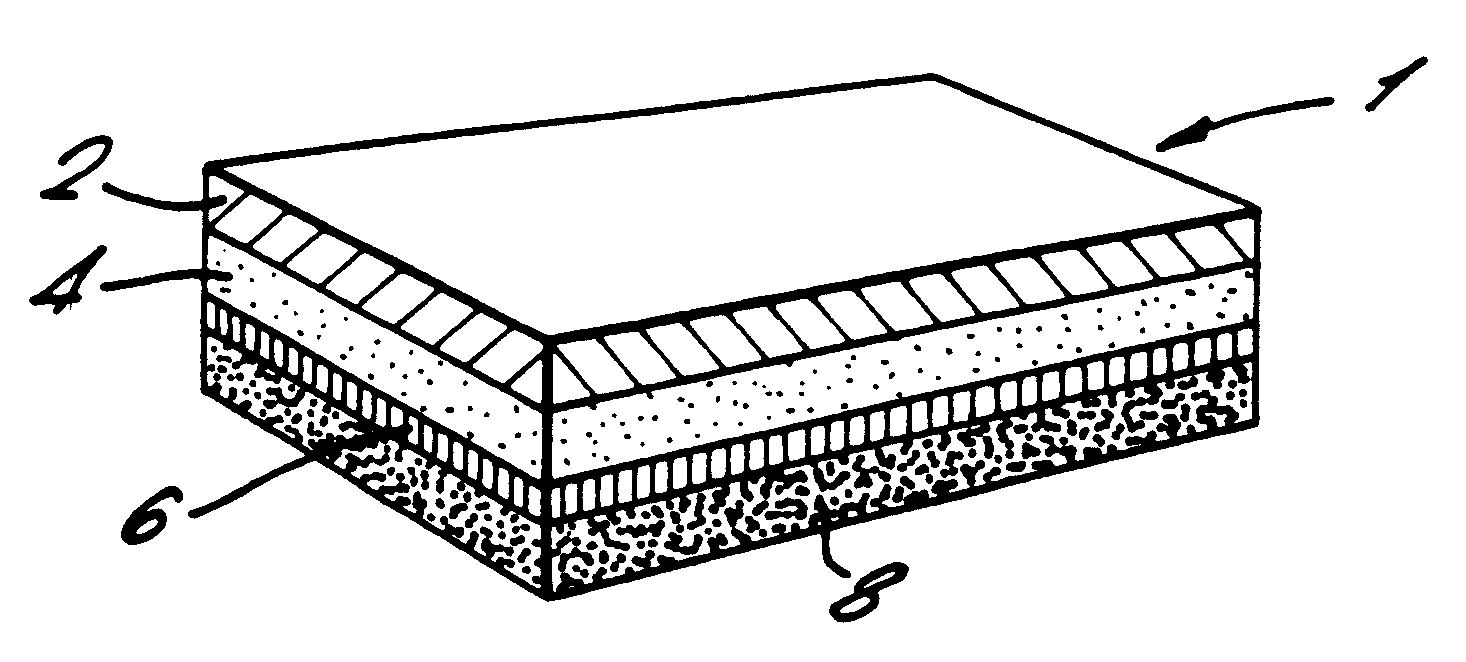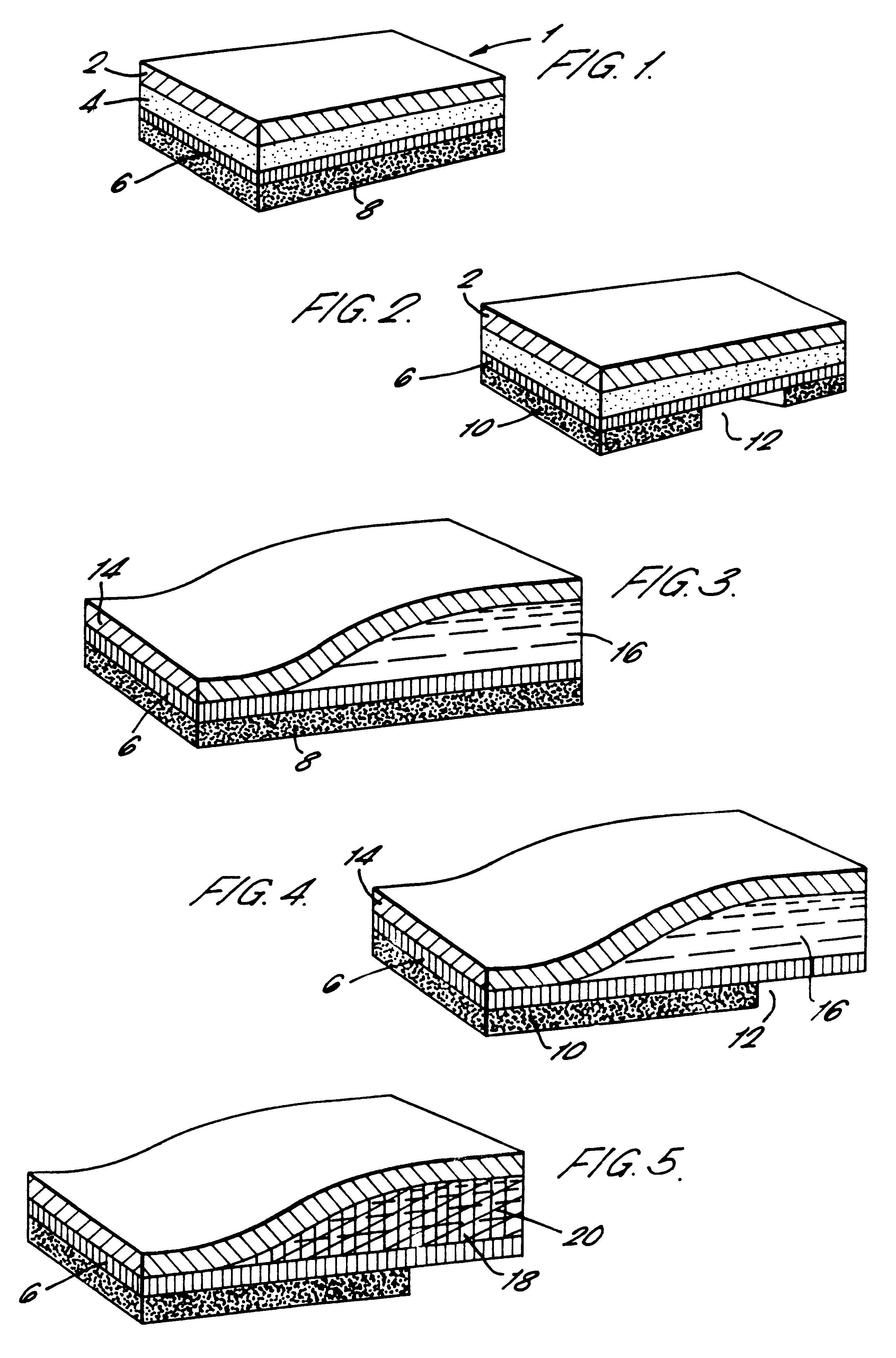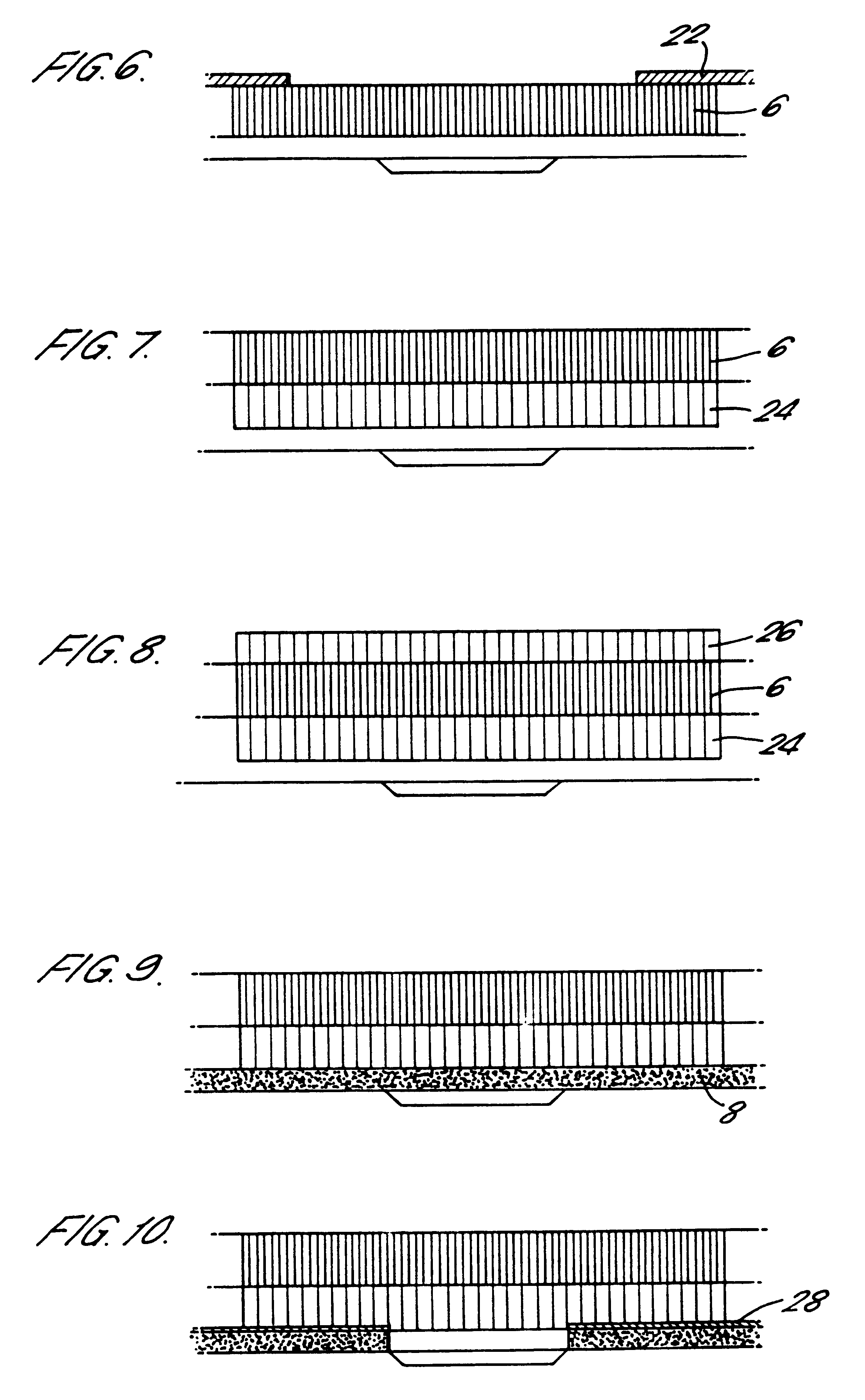Transdermal device for administration through de-epithelialized skin
a transdermal device and skin technology, applied in the field of transdermal devices for administration through de-epithelialized skin, can solve the problems of difficult control, limited number and type of transdermal drug administration agents, and few drugs which are able to adequately penetra
- Summary
- Abstract
- Description
- Claims
- Application Information
AI Technical Summary
Benefits of technology
Problems solved by technology
Method used
Image
Examples
example 2
A transdermal device was prepared as described in Example 1 except that the cellulose acetate membrane was impregnated with silver chloride and had an average pore size of about 2.0 .mu.m.
The device was applied to a de-epithelialized skin lesion of a healthy volunteer and plasma concentrations of DDAVP were sampled daily. The results showed increased uptake on days 1 and 2 and then stabilization to a steady state on days 3 and 4 at one third the initial level of uptake. The device was removed after 4 days and no sign of infection was observed. The hydrogel was assessed for bacterial growth and none was found.
example 3
Transdermal uptake of macromolecules through de-epithelialized skin lesions is demonstrated using fluorescein-labelled dextrans having the molecular weight range 3000 to 70,000 Daltons. The experiments were carried out on seven healthy volunteers. The volar side of one forearm was cleansed with cyclohexamide solution. Four suction cups (aperture diameter 6 mm area cm.sup.2) were sealed to the skin of each volunteer by adhesive tape and a relative vacuum of 200 mmHg below atmospheric pressure was applied. Within 2 to 3 hours suction blisters were formed painlessly with areas corresponding to the apertures of the suction cup. The epidermal roofs of the blisters were removed and the contained exudate absorbed with a piece of medical gauze. Transdermal devices were applied to the four de-epithelialized lesions on each of the volunteers and one device to intact skin as control. The devices comprised reservoirs fitted with a 6 mm aperture in their base and removable lids.
At t=0 the four r...
PUM
 Login to View More
Login to View More Abstract
Description
Claims
Application Information
 Login to View More
Login to View More - R&D
- Intellectual Property
- Life Sciences
- Materials
- Tech Scout
- Unparalleled Data Quality
- Higher Quality Content
- 60% Fewer Hallucinations
Browse by: Latest US Patents, China's latest patents, Technical Efficacy Thesaurus, Application Domain, Technology Topic, Popular Technical Reports.
© 2025 PatSnap. All rights reserved.Legal|Privacy policy|Modern Slavery Act Transparency Statement|Sitemap|About US| Contact US: help@patsnap.com



